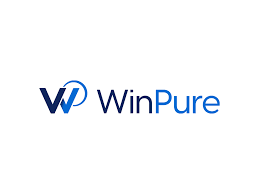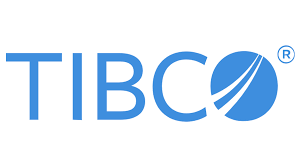What is Data Reconciliation: Tools, Examples, Techniques
Summarize this article with:
✨ AI Generated Summary
Data reconciliation stands as one of the most critical processes in modern data management, yet many organizations struggle with outdated approaches that fail to leverage current technological advances. Enterprises now process exponentially more data from diverse sources than ever before, while traditional manual reconciliation methods create bottlenecks that can delay critical business decisions by weeks or months. This fundamental mismatch between data complexity and reconciliation capabilities represents a significant competitive disadvantage in today's data-driven economy.
Data reconciliation is the systematic process of comparing data from various sources to ensure integrity, consistency, and accuracy across systems. This essential practice involves identifying and correcting discrepancies such as duplicate entries, formatting inconsistencies, and data-quality issues to maintain reliable foundations for analytics, reporting, and decision-making. Modern data reconciliation extends beyond simple comparison to encompass automated validation, intelligent matching algorithms, and continuous-monitoring capabilities that ensure data trustworthiness at scale.
What Are the Primary Benefits of Data Reconciliation?
Consistency Across Different Systems
Minor differences can cause significant errors in analytics. Reconciliation resolves formatting issues, duplicate entries, and misaligned data so that applications run on a solid foundation of consistent data.
Improved Overall Data Quality
Reconciliation functions as a quality checkpoint. For example, finance teams can compare customer-transaction records across databases, identify discrepancies, and ensure accurate financial reporting.
Enhanced Decision-Making
With reliable data, organizations can perform in-depth analysis that reveals customer preferences and emerging trends, leading to better-informed decisions.
Increased Operational Efficiency
Pairing reconciliation with technologies like AI and advanced analytics streamlines repetitive tasks, reduces human error, and speeds up workflows.
Better Regulatory Compliance
Reconciliation establishes audit trails that facilitate compliance, ensure traceability, and reduce the risk of financial or legal consequences.
Which Scenarios Most Commonly Require Data Reconciliation?
- Financial Systems Integrations: Compare datasets from ERP and financial-reporting software, accounting for currency conversions, rounding errors, and market swings to produce accurate reports.
- Data Migration Projects: Verify that data in a target system matches its source after migration, reducing the risk of loss or corruption.
- Healthcare Data Management: Identify duplicate patient records or incorrect lab results, and maintain data integrity during clinical research by reconciling lab tests and trial data.
- Cloud Migration Initiatives: Before moving from legacy systems to the cloud, reconcile schemas and data types to minimize loss and streamline transfer.
What Are the Most Common Types of Data Discrepancies?
- Inconsistent Formats: Different sources often store data in varying formats. Reconciliation standardizes them to a common structure.
- Mismatched Values: Departments may follow different standards such as pricing by region. Reconciliation helps establish a single source of truth.
- Missing Data: Identify and address missing fields such as customer contact details before analysis.
- Duplicate Records: Detect and merge duplicate entries such as the same customer listed under multiple IDs.
- Data Type Mismatches: Validation checks, such as format verification and pattern matching, ensure consistency between datasets.
How Does the Modern Reconciliation Process Work?
1. Identification of Data Sources
Determine every source that needs to be compared.
2. Data Extraction
Use a tool such as Airbyte which offers over 600+ connectors to consolidate data from diverse sources including databases, APIs, and cloud platforms.
Key Airbyte features include:
- Connector Development Kit – quickly build custom connectors with AI assistance in under 30 minutes
- Security – end-to-end encryption (SSL/HTTPS) with robust security features; no current public confirmation of SOC 2 or ISO 27001 certification
- Flexibility – UI, API, Terraform Provider, and PyAirbyte options
- GenAI Workflows – import unstructured data into vector stores such as Pinecone, Milvus, and Weaviate
- Change Data Capture – capture incremental changes with CDC for real-time synchronization
- Direct Loading – advanced capabilities that reduce warehouse costs and improve sync speeds
- Multi-Region Deployments – support for data sovereignty and compliance requirements across global operations
3. Data Normalization
Standardize formats, types, and values.
4. Matching and Comparison
Identify discrepancies such as human-entry errors using intelligent algorithms.
5. Discrepancy Analysis
Analyze inconsistencies to understand root causes and patterns.
6. Resolution and Validation
Apply corrections and validate results through automated and manual processes.
7. Reporting
Document resolved and outstanding issues with comprehensive audit trails.
8. Continuous Monitoring
Implement real-time monitoring to catch future discrepancies quickly and prevent data drift.
What Are the Essential Best Practices for Data Reconciliation?
- Establish Clear Objectives: Define the data sources and scope with specific success metrics.
- Standardize Data Formats: Adopt organization-wide standards for consistency across all systems.
- Implement Data Governance: Define policies and assign data stewards with clear accountability.
- Maintain Audit Trails: Record every step for transparency and future audits with immutable logging.
- Address Root Causes: Fix underlying issues such as incorrect data-entry processes rather than symptoms.
- Leverage Automation: Implement automated matching rules and exception handling to reduce manual intervention.
- Enable Real-Time Processing: Move beyond batch processing to support real-time reconciliation for critical business processes.
- Establish Quality Thresholds: Define acceptable error rates and implement automated alerts when thresholds are exceeded.
Which Tools and Technologies Are Most Effective for Data Reconciliation?
OpenRefine

OpenRefine (formerly Google Refine) cleans and transforms messy data. Clustering and faceting features allow you to merge duplicates and standardize formats with powerful pattern-recognition capabilities.
Winpure

Winpure removes duplicates and corrects errors in large datasets with advanced matching algorithms and an intuitive interface designed for enterprise-scale operations.
TIBCO Clarity

A SaaS platform that automates the comparison, validation, and correction of datasets with comprehensive audit trails.
Modern Enterprise Solutions
Advanced platforms like HighRadius, Kolleno, and FloQast offer AI-powered reconciliation capabilities with features including automated matching rules, exception management, and integration with enterprise resource planning systems.
Cloud-Native Platforms
Solutions such as Datafold and Monte Carlo provide observability pipelines, automated schema validation, and continuous monitoring that integrate seamlessly with cloud data warehouses and modern data stacks.
How Can Generative AI and Autonomous Resolution Transform Data Reconciliation?
Agentic AI for Task Orchestration
Modern reconciliation increasingly relies on autonomous AI agents that handle complex workflows without human intervention. These systems use natural language processing to understand reconciliation requirements and execute sophisticated matching algorithms automatically.
Conversational interfaces allow users to query reconciliation status and resolution details through natural language, while AI agents learn from historical patterns to improve matching accuracy continuously. Virtual assistants can now retrieve transaction histories, execute complex database queries, and provide explanations for reconciliation decisions in plain language.
Advanced Pattern Recognition and Anomaly Detection
Generative AI models excel at identifying subtle patterns in transaction data that traditional rule-based systems might miss. These systems use deep learning techniques to detect anomalies by analyzing normal transaction behaviors and flagging deviations that require investigation.
Hybrid approaches combine natural language processing for soft-matching capabilities with graph neural networks for complex relationship analysis. This enables reconciliation systems to handle variations in data formatting, terminology differences, and complex business relationships that previously required manual intervention.
Predictive Reconciliation Capabilities
AI-powered systems now incorporate forecast reconciliation techniques that predict potential discrepancies before they occur. By analyzing historical reconciliation patterns and transaction flows, these systems can identify high-risk scenarios and proactively address potential issues.
Machine learning models continuously optimize reconciliation rules based on outcomes, reducing false positives and improving overall accuracy. This self-learning capability ensures that reconciliation processes become more efficient over time while adapting to changing business conditions and data patterns.
What Role Do Data Governance Frameworks Play in Modern Reconciliation?
- ISO 8000 Compliance in Reconciliation Workflows: International standards like ISO 8000 provide comprehensive frameworks for data quality management that directly impact reconciliation effectiveness.
- DAMA DMBOK Implementation for Enterprise Governance: The Data Management Body of Knowledge provides eleven core knowledge areas that directly support reconciliation governance.
- Regulatory Alignment and Compliance Automation: Modern governance frameworks integrate directly with reconciliation tools to automate compliance reporting and audit-trail generation.
How Are Machine Learning and AI Revolutionizing Data Reconciliation?
Intelligent Automation and Pattern Recognition
AI and machine learning algorithms have transformed data reconciliation from a primarily manual process to an intelligent, automated system. Modern reconciliation platforms use sophisticated pattern recognition to automatically match records across disparate sources, even when data formats and structures differ significantly.
Machine learning models continuously learn from reconciliation outcomes, improving matching accuracy over time and reducing false positives. These systems can handle complex scenarios such as fuzzy matching for customer names, intelligent date correlation, and contextual understanding of transaction relationships that traditional rule-based systems struggle to address.
Real-Time Processing and Anomaly Detection
Advanced AI systems enable real-time reconciliation capabilities that identify discrepancies as they occur rather than during batch processing cycles. This immediate detection allows organizations to address issues before they cascade through downstream systems and impact business operations.
Anomaly detection algorithms analyze transaction patterns and behaviors to identify unusual activities that may indicate data quality issues, fraud, or system errors. These capabilities are particularly valuable in financial services where rapid identification of discrepancies can prevent significant financial losses and regulatory violations.
Predictive Analytics and Proactive Management
Machine learning models now incorporate predictive analytics to forecast potential reconciliation challenges based on historical patterns and current data trends. This proactive approach allows organizations to address issues before they manifest as actual discrepancies, improving overall data quality and operational efficiency.
AI-powered systems can predict reconciliation processing times, identify high-risk scenarios, and automatically adjust processing priorities to ensure critical reconciliations complete within required timeframes. This capability is essential for organizations with complex month-end closing processes or real-time reporting requirements.
Key Takeaways for Modern Data Reconciliation
Reconciliation is essential for maintaining data accuracy and integrity in complex, multi-source environments. Benefits include improved decision-making, enhanced operational efficiency, and robust regulatory compliance. Generative AI and machine-learning automation significantly reduce manual effort while providing deeper insights. Modern cloud-native tools offer scalability and flexibility that traditional solutions cannot match.
Frequently Asked Questions
What is Data Reconciliation in Healthcare?
Reconciling healthcare data helps staff identify discrepancies such as conflicting medication lists that could harm patients, enabling safer and more accurate care plans.
What are the requirements for data reconciliation?
You need a comprehensive data-governance framework, robust audit trails, automated monitoring capabilities, and systematic processes to address the root causes of data errors.
What is an example of Data Reconciliation?
In finance, companies reconcile internal transaction records with bank statements to confirm that every expense or deposit is recorded correctly. Advanced systems now use AI to automatically match transactions, identify discrepancies, and generate exception reports for manual review. (See also: account-reconciliation software.)
How does AI improve data reconciliation accuracy?
AI improves accuracy through intelligent pattern recognition, fuzzy-matching algorithms, and continuous learning from reconciliation outcomes.
What compliance standards apply to data reconciliation?
Key standards include SOX, GDPR, HIPAA, and industry-specific regulations such as PCI DSS. Modern reconciliation systems incorporate automated compliance reporting and audit-trail generation to support these requirements while maintaining operational efficiency.

.webp)
